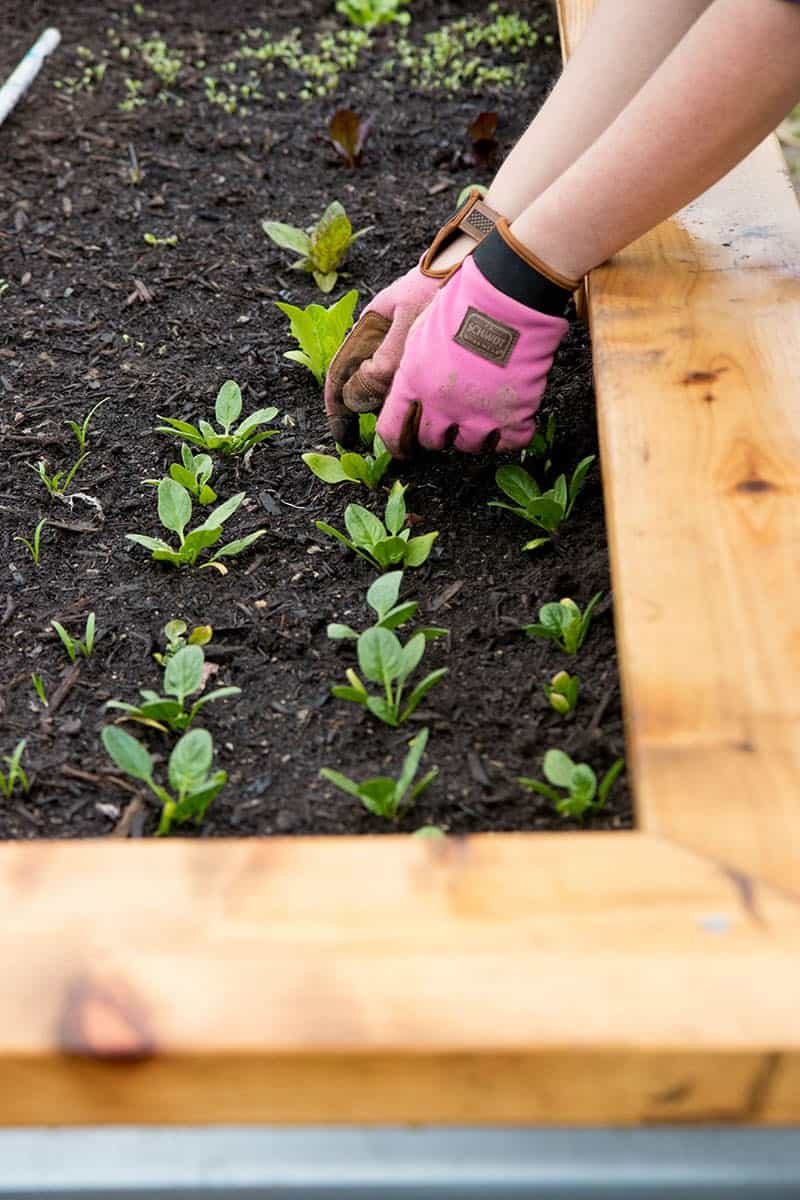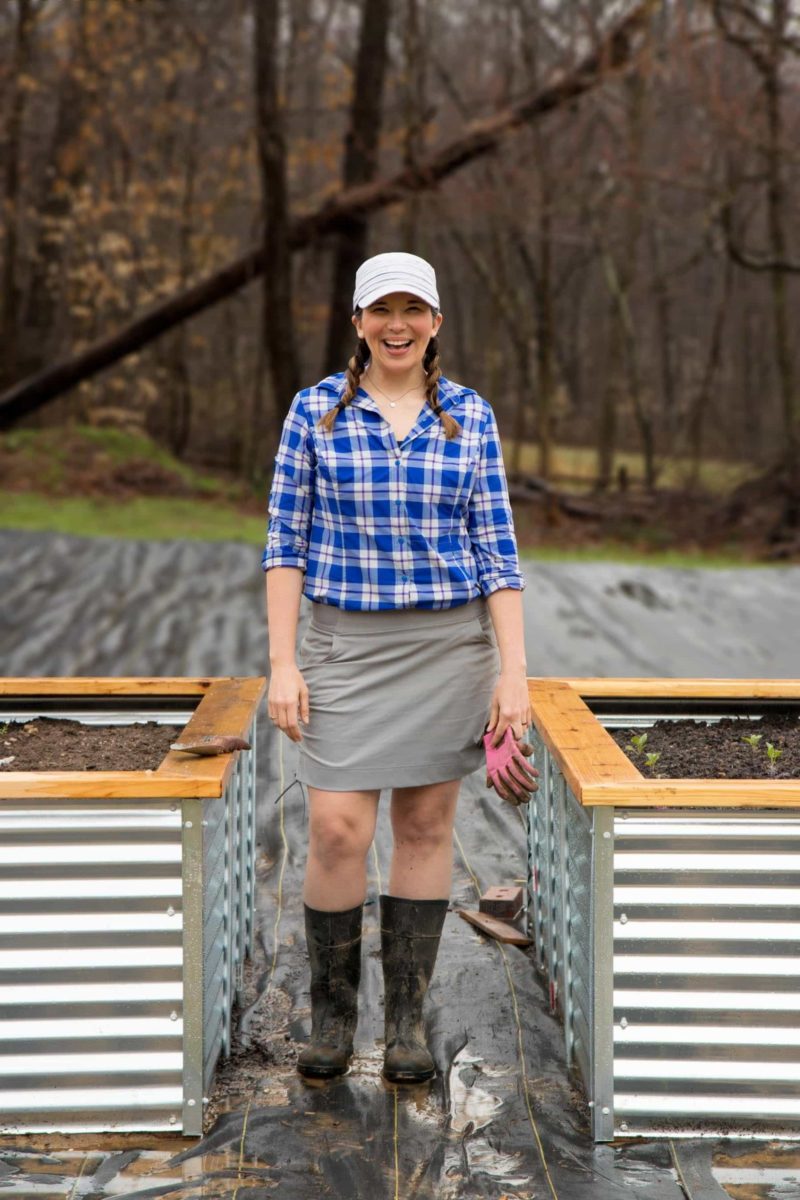When I first started gardening on my own (as opposed to all the gardening I did as a kid with my parents), I had one goal in mind: I wanted to save cash on some organic veggies. Those suckers are expensive in the store (or even at the farmers’ market), and I knew I had enough gardening knowledge to at least grow some dang cherry tomatoes and save a few bucks each summer.
And it worked. I can safely say we’ve saved thousands of dollars over the years by growing our own food. But now that I’m a decade into my gardening adventure, I can tell you that the monetary benefit is no longer my main reason for gardening. Is it a nice fringe benefit? Of course. But my main reason that I put in a garden every year isn’t quantified with grocery receipts: I garden for my mental health.
There are a million aspects of gardening that help protect my mental health. From something as scientific as the fact that daily doses of sunshine help keep your body’s vitamin D levels up, which in turn helps stave off depression and anxiety, to things that are harder to measure on a blood test—like the fact that gardening is my favorite way to practice mindfulness.
You can, of course, pull out a meditation cushion in the middle of your vegetable garden and do a formal meditation session, but I much prefer an organic (pun intended) mindfulness practice while I’m out in the garden. Here’s how I do practice mindfulness in the garden:
I schedule time.
I started doing this a few years ago when I realized that when I was busy with work, I would neglect the garden. So now every day, I schedule 30 minutes in the garden. Some days (normally on the weekends), I stay out for much, much longer, but at least, every day, I have a 30-minute touchstone with Mother Nature. It’s part of my routine – rain, shine, heat, or cold.
I leave my phone inside.
My phone is a gateway drug for a lack of mindfulness. It allows me to engage in thoughts in a way that I couldn’t without the entire world at my fingertips. Oh, we need to order printer ink pops into my head. I grab my phone and add it to Amazon. Before I know it, it’s three hours later, and I’m 42 weeks deep into someone’s Instagram account. Smartphones are the death of a mindfulness practice (yes, even with the amazing meditation apps that are available).
Going phoneless also means that I can’t be interrupted at any time. I almost always leave my phone in the house when I’m in the garden. Depending on the situation, I might bring my phone out with me, but I do not keep it on my person—I put it on a nearby table with the volume turned up, and I set it to “Do Not Disturb” mode. That way, I can still receive calls from important contacts I set (like my husband and my parents), but all other notifications are silenced. I also avoid listening to music or podcasts most of the time. I used to, but I find myself much more calm and relaxed after a garden session if I let the music of nature be my soundtrack.

I start by actively observing with my senses.
When I first get out in the garden, I like to take just a handful of minutes and actively engage with all my senses. I start with identifying three things I see, then I close my eyes and identify three things I hear, and touch and smell, and so on. And then, when the veggies are actually coming off, I make sure to do “taste” too—trying three different items and really observing the taste and texture of each. This short activity really helps me ground myself in the garden space and get in a good mindfulness practice mindset.
I try not to be so goal-oriented.
I’m a list-making, chart-following, schedule-loving kind of person, so my first instinct when I hit the garden is to check off a to-do, but I’m trying to make gardening less about the product and more about the process. That means that during my 30 minutes every day, I walk down to the garden and just putz around sometimes. I might flitter from bed to bed. I might not get much accomplished at all. Or, I might spend the whole time weeding a bed and getting a whole load of compost shoveled. Both ends of the productivity spectrum—and everything in between—is “right.” I will say that when I know I have more time to devote—say a couple hours on the weekend—that’s when I go into to-do list mode and really try to plow through it and be productive.
I focus on the task at hand.
When I do decide to buckle down and work on one task, I try to give it my whole attention. A lot of gardening is mindless work—like say, weeding a bed—but there is so much mental health value in making a mindless task mindful. Instead of using my time weeding to think about what I’m going to make for supper or what my next blog post will be about, I focus on the color of the weeds, the way the weeds feel in my fingers, the smell of the soil. When I’m there, in the garden, I try to really be there. Is this always easy? HECK NO. Thoughts and ideas and to-dos bombard me constantly—but the whole idea of practicing mindfulness is to be able to let those thoughts pass by without engaging. It gets easier the more you do it. It also seems to be easier the more strenuous the physical work—I don’t find my mind wandering at all when I’m shoveling compost!

I speak to Mother Nature (like, literally).
Like a totally normal, balanced person, I have entire conversations with Mother Nature when I’m out in the garden. I tell her how beautiful the sky is today. I tell her how good the sun feels on my skin. I thank her for our beautiful, fertile soil. I tell her the dandelions smell particularly sweet today. I tell her she’s doing a beautiful job growing my tomatoes. And no, I’m not getting all woo-woo spiritual on you here—talking to Mother Nature is just my way of being able to acknowledge all the wonderful, blissful things about being out in the garden. You might speak to God. You might speak to yourself. You might tell your gardening companion. You might record an Instagram story. Either way, I think there is real value in speaking your gratitude aloud. It’s also another way of making sure you are aware of your surroundings—after all, you have to see and appreciate something before you can be grateful for it.
I use garden time as transition time.
This is less about mindfulness and more just a really freakin’ good tool I’ve discovered—garden time is the perfect transition time. Just a handful of minutes spent in the garden between tasks is a great way to switch gears. This was particularly good for me when I had a super long commute after a workday. Before I headed inside and got bombarded by people and animals and stacks of junk mail and dinner plans, I’d spend just two or three minutes in the garden. This eased the transition back into my home life. Now I do it when I’m transitioning from my work day to cooking dinner. Or transitioning from getting home from running errands to putting groceries away. My favorite time to do it is to transition into my workday—after breakfast, but before I sit down at my desk. It doesn’t even have to be a big vegetable garden. Even just spending a minute or two picking up leaves from your landscaping does the trick.

It also, of course, helps to have a beautiful space to be mindful. That’s one of the main reasons we are working hard to make sure our garden beautiful and functional (a change from year’s past). But I promise you can be mindful anywhere a plant can grow—even if it’s just while you water a planter on your apartment balcony. I hope you’ll try it!







